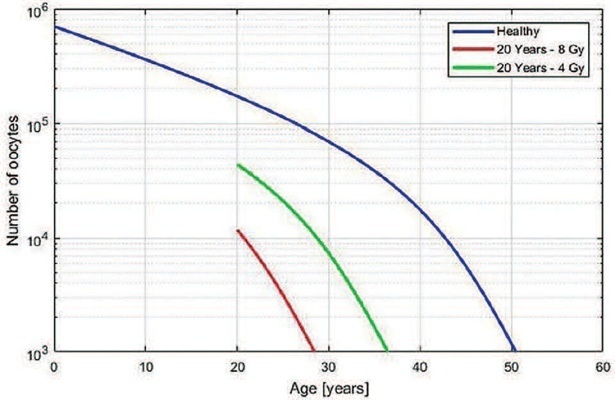Revista Brasileira de Ginecologia e Obstetrícia. 2022;44(6):573-577

The present study aimed to develop a useful mathematical model that predicts the age at which premature ovarian insufficiency might occur after teletherapy radiation. A diagnosis of premature or early menopause has physical and psychological consequences, so women may need support and long-term medical follow-up.
To correlate ovarian radiation dose with ovarian function, we used the formula described by Wallace et al.: √g(z) = 10(2-0,15z), where “g(z)” and “z” represent oocyte survival rate and the radiation dose (in Gray), respectively. By simulating different ages and doses, we observed a pattern that could be used to simplify the relationship between radiation dose and remaining time of ovarian function.
We obtained a linear function between ovarian radiation dose and loss of ovarian function (LOF) that is the percentage of decrease in the time to the ovarian failure compared with the time expected for a woman at the same age without irradiation exposition. For patients <40 years old and with ovarian radiation doses < 5 Gy, the equation LOF = 2.70 + (11.08 × Dose) can be applied to estimate the decrease in time to premature ovarian insufficiency.
The present study reports a practicable theoretical method to estimate the loss of ovarian function. These findings can potentially improve the management and counseling of young women patients submitted to radiotherapy during their reproductive years.
Search
Search in:


Comments